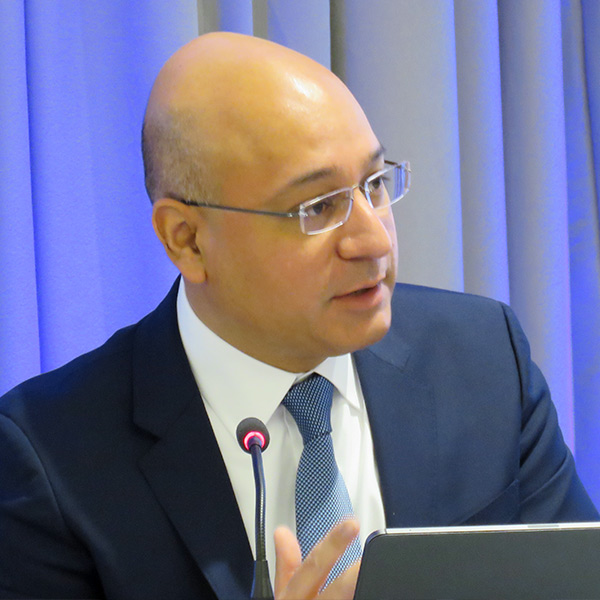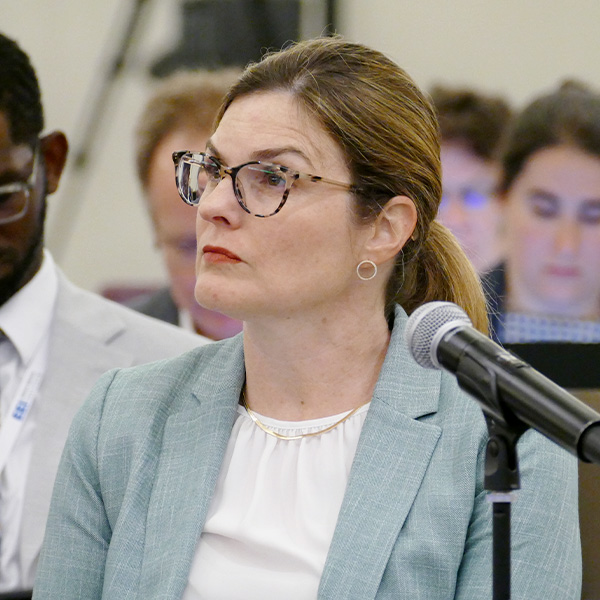MISO has waded into the battle over who will build the Iowa portions of its long-range transmission projects two months after a court found the state’s right-of-first-refusal law unconstitutional.
The RTO filed an amicus brief in the case, asking the Polk County District Court to lift an injunction that halted regulatory permitting for long-range transmission plan (LRTP) lines that incumbent developers ITC Midwest, MidAmerican Energy and Cedar Falls Utilities elected to build under the ROFR law (CVCV060840).
The District Court in December struck down Iowa’s ROFR law and prohibited regulatory permitting on Iowa’s portion of five of MISO’s LRTP projects in which incumbent developers had benefited from the law. The ruling cast doubt on $2.6 billion in already approved LRTP projects located at least partly in Iowa. (See Iowa ROFR Law Overturned, Throwing Multiple MISO LRTP Projects into Uncertainty.)
Since then, competitive developer LS Power has asked the court to reverse MISO’s assignment of the Iowa projects to the incumbent developers after the ROFR was deemed unconstitutional. LS Power challenged the ROFR’s validity in the first place, arguing it was shut out of the bidding process.
MISO said while it doesn’t take a position on the legitimacy of the ROFR, it is asking the court to reconsider the injunction against permitting, given that the planned lines are needed for the sake of grid reliability. The grid operator also argued the District Court’s interference with the line development is improper because FERC is best situated to handle who is allowed to build the lines pursuant to the MISO tariff.
MISO said it has a “strong and substantial interest” in making sure the LRTP projects in Iowa are built by the 2028-2030 time frame. The RTO said while the four- to six-year span seems like a long time, 345-kV line construction is a lengthy process that requires “timely permitting” to achieve targeted in-service dates. It emphasized that benefits stemming from its $10 billion LRTP portfolio will cover costs and save billions more in reliability advantages and access to new generation across the Midwest. MISO added that the LRTP lines’ benefits are premised on the lines operating as a whole.
“The injunction in question in this case, if sustained, would stand as an obstacle to timely completion of much-needed transmission to serve not only Iowa but the region as a whole,” MISO wrote to the court in its Feb. 6 brief. “MISO strongly urges this court to revisit its prior decision regarding the subject injunction in light of these factors and circumstances to avoid potentially ruinous practical public policy consequences.”
MISO said if the injunction is allowed to stand, current and future long-range transmission planning will be put at risk.
‘Impermissibly Intrudes’
The grid operator also said the court’s December injunction “impermissibly intrudes on the FERC’s exclusive authority over the transmission of electric energy in interstate commerce under the Federal Power Act.” It said the court “should not disrupt the timely completion of these projects in pursuit of a remedy that only FERC may grant” and added that only FERC has the authority to interpret the MISO tariff.
MISO said while LS Power can argue that it was deprived of the opportunity to bid on the lines’ construction and suffered economic harm due to the ROFR law, “whatever harm LS Power may potentially suffer is not as severe, concrete and particularized as the harm energy users, energy providers, MISO and its affiliates may suffer.”
FERC, MISO argued, is in the best position to assess competing claims to the lines’ construction, weigh how changes and delays to the lines will impact all parties, and order remedies. The RTO said LS Power already has “an effective federal remedy” through FERC and is free to argue before the commission that MISO’s assignment of the Iowa LRTP projects to the incumbents violated its tariff in light of the unconstitutionality holding.
“The public policy interests at stake, the balance of the harms as between the parties involved (and as to MISO), in the context of the nature and gravity of the vital regional utility grid issues at stake, make this matter ideal for judicial reconsideration as requested,” MISO wrote.
At a Feb. 7 MISO Advisory Committee meeting, Clean Grid Alliance’s Beth Soholt said she believed the Iowa ROFR ruling affects more than just the Iowa line segments in the first LRTP portfolio.
Soholt said the delays and uncertainty could bleed over to impede progress on MISO’s second LRTP portfolio, which is in the works.
“I think it’s very important for MISO to be [as] transparent as possible about the impacts and what that does to the study process of follow-on lines. … It’s a really major thing if we start having cascading timing issues. A lot of states are counting on these transmission buildouts,” Soholt said.
MISO Deputy General Counsel Kristina Tridico said the RTO will contemplate the most appropriate venue to share new information on the status of the Iowa projects with stakeholders.
Tridico said MISO will defer to the court’s decisions on the matter and understands the court’s actions stand to affect the planning and timely completion of LRTP lines. She said the RTO hopes to convey the importance of the LRTP lines in its brief.

